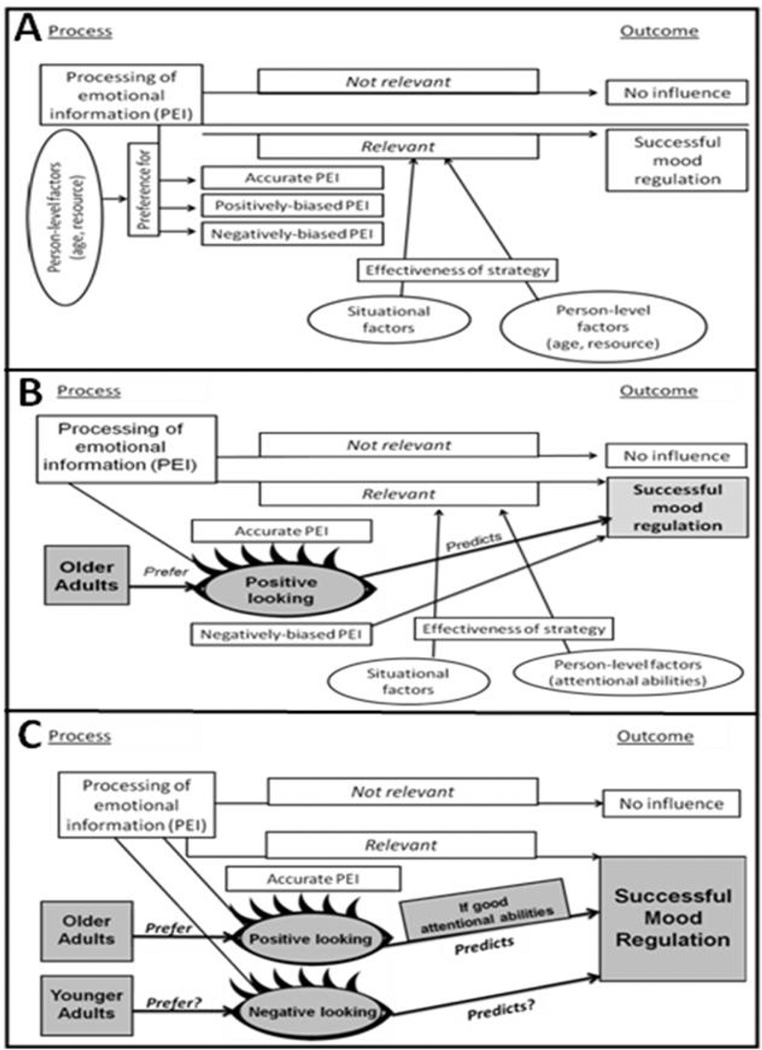Figure 1.
(A) Proposed framework for linking process and outcome in the study of emotion and aging (from Isaacowitz & Blanchard-Fields, 2012). (B) Hypotheses drawn from socioemotional selectivity linking positivity effects (in this case “positive looking”) to mood regulation. Older adults are hypothesized to prefer positive looking (Q1), and positive looking is hypothesized to lead them to experience successful mood regulation (Q2). (C) Findings from our studies: Older adults prefer positive looking, but it only leads to successful mood regulation for older adults with good attentional abilities. For younger adults, there may be a preference for negative looking, and it may lead to successful mood regulation, but evidence for this is preliminary.

